Autumn c.1950
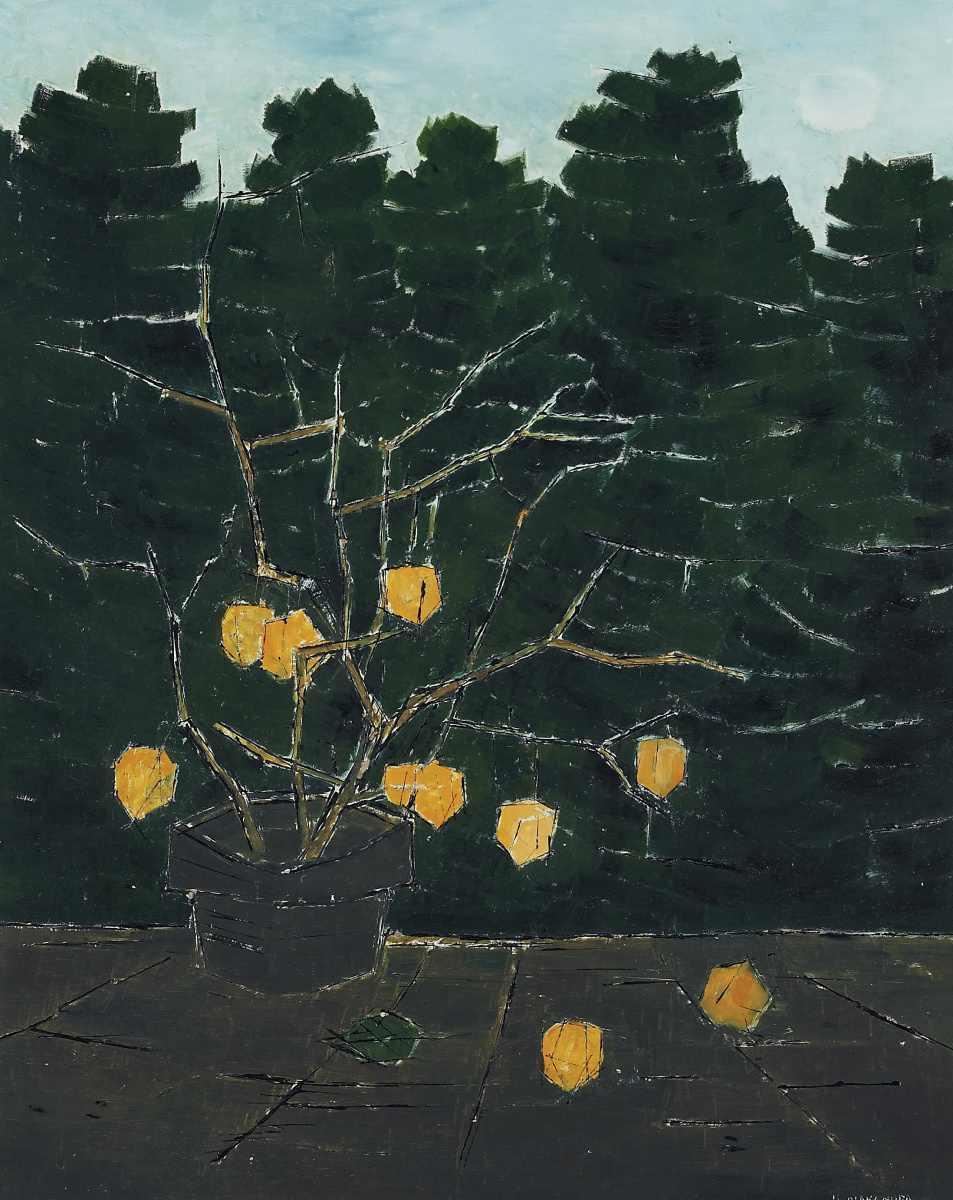
Kazuo Nakamura, Autumn, c.1950
Oil on tempered hardboard, 61.1 x 48.3 cm
Art Gallery of Ontario, Toronto
Autumn appears to be Kazuo Nakamura’s first still-life painting. Created while he was a student at Central Technical School in Toronto, this work depicts a potted tree or plant sitting on a table with a view of the forest behind. Still lifes often function as bridges between the human-made and natural worlds, and here the domestic plant is juxtaposed against the wild forest.
As is the tradition of the still life, especially as it evolved in Europe in the seventeenth century, Nakamura’s Autumn marks the passage of time and acts as a memento mori. The seasonal reference of the title and the contrast between the foliage of the evergreens in the background and the bare branches of the potted tree in the middle ground reference the cycle of life against the backdrop of a more permanent, underlying order.
In fact, an odd flip is occurring here: just as in the Tashme paintings, an apparent chaos of the natural world conceals a subtle underlying structure revealed through pattern. Yet the still life is a far more intimate expression of this theme and reflects the changes occurring in Nakamura’s life. Now settled in Toronto with his family and focusing on his chosen craft, the artist paints Autumn as something of a sigh of relief, a moment of peaceful reflection. However, the contrast between our manufactured reality and nature, between the illusion of perfection shattered by the war and what nature could offer, remains.
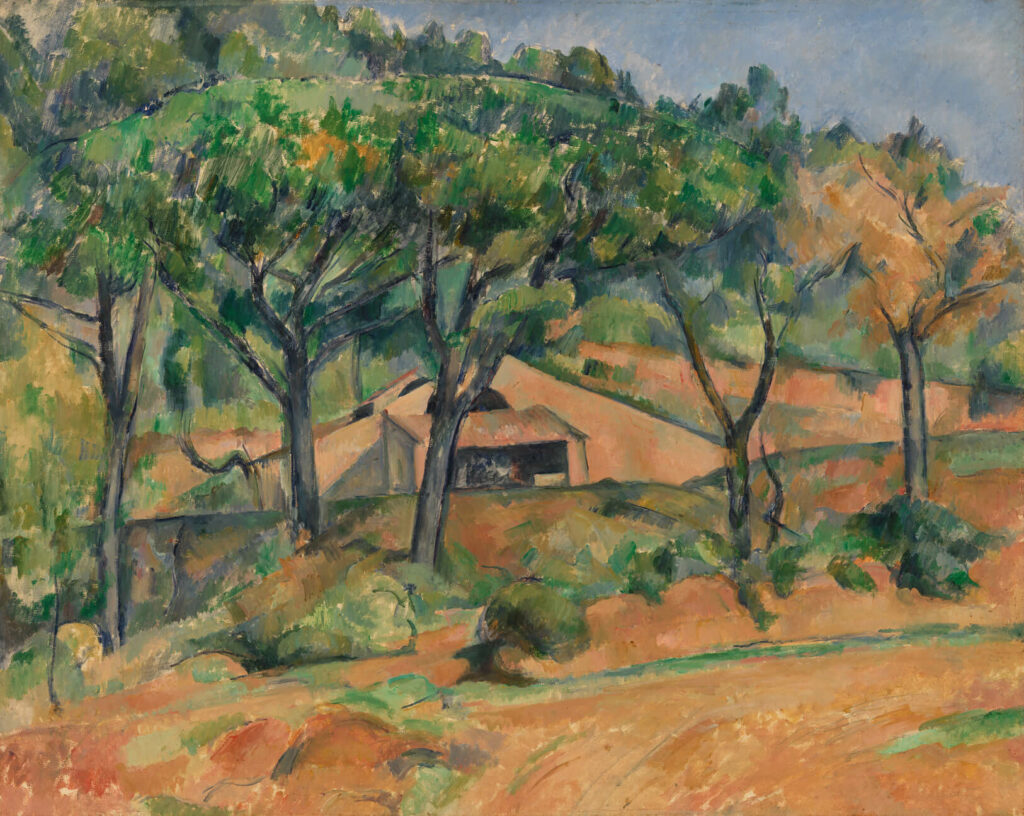
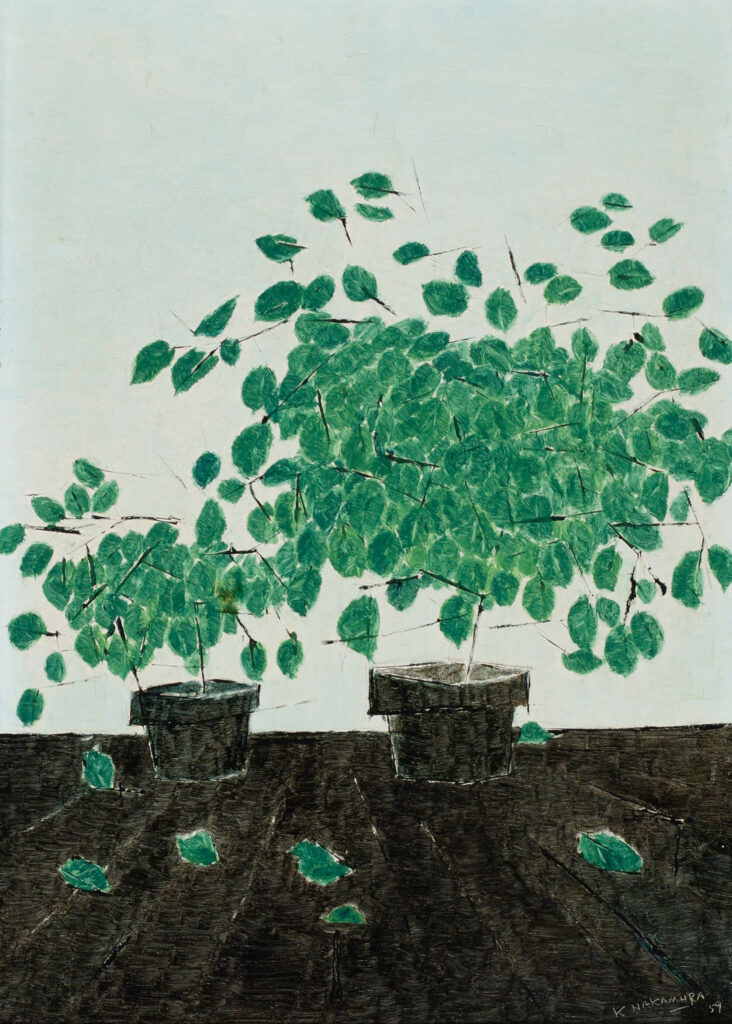
The wooden table on which the potted fruit tree sits is drawn along perspective lines, leading the eye from the foreground to the background. This appears to be a more controlled, measured organization than the forest behind it or the randomly extending branches of the potted tree. Yet there is a pattern to the apparent chaos of the foliage, which is evident in the very structured horizontal brushstrokes Nakamura used to paint it. The potted tree gradually blends into this mass of leaves.
Stylistically, the brushwork in the background recalls Paul Cézanne (1839–1906). In a letter to fellow French artist Émile Bernard on April 15, 1904, Cézanne suggested that he “deal with nature by means of the cylinder, the sphere and the cone”—in other words, that he use geometry to find order in the natural world. In Autumn, Nakamura also adopts Cézanne’s typical play between surface and depth, flatness and space. For example, he paints objects like the fruit partly in the round and partly flat.
Autumn also appears to reference the famous tree paintings of Piet Mondrian (1872–1944), whom Nakamura mentioned as an influence in an interview he gave in 1979. Mondrian’s Gray Tree, 1911, for example, shows a leafless tree gradually beginning to blend with the surrounding space. This series of line works eventually led to pure abstraction in Mondrian’s Neo-Plastic compositions.
Nakamura continued to paint still lifes periodically throughout the 1950s and well into the 1960s, culminating in an intriguing series of works that depict mirrored objects, such as Reversed Images, 1965.

 About the Author
About the Author
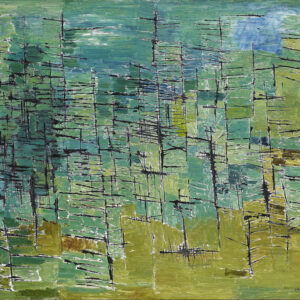 More Online Art Books
More Online Art Books
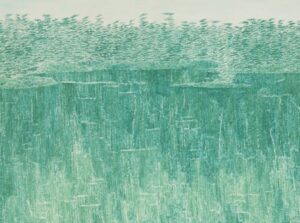 Acknowledgements
Acknowledgements